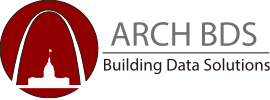知识问答
公司二十余年来从百余家合作伙伴的不动产设备设施管理实施过程中积累了大量的经验,也许您可以从以下信息中寻求到帮助。
Archibus BIM Viewer empowers building managers responsible for asset reliability and maintenance, helping them unlock and visually explore all the asset data established inside BIM during the design and construction phases as well as all tracking active work and diagnostics.
When you base operations and maintenance workflows on incomplete, incorrect analog asset data, everything becomes
fragmented, inefficient, and costly.
By standardizing asset data inside BIM, you can finally get context-rich asset data flowing to operations, accelerating
commissioning through workflows that are automated from the very start.
Archibus developed BIM Viewer to help organizations solve the problem of accessing, reporting on asset inventory data
that is locked in Revit models and may be difficult to use in their building operations. BIM Viewer delivers:
• Centralized asset inventory
• Clear visual asset connections and dependencies
• Properly planned and scheduled maintenance
• Concrete connections to critical BIM data
We do not have an Autodesk Construction Cloud repository and we are planning to host our models in an Archibus Forge bucket. To publish Revit models to an Archibus Forge bucket, you need Autodesk Revit and Archibus Extensions for Revit. Open the model in Autodesk Revit and use the Archibus Publish 3D button to upload the model to your private Archibus Forge bucket and make it available to BIM Viewer. The Publish 3D action translates your Revit model to the Autodesk SVF2 format.
BIM managers can use Cloud Cataloging to link models from their Autodesk BIM 360 repository to both new buildings and new floors and import all rooms together with their attributes (ex. Room Category) into Archibus, creating a connection between the data in the Revit model and the building, floors, and rooms in Archibus. Cloud Cataloging does currently include cataloging of equipment/assets or other more advanced features that exist in Archibus Extensions for Revit like Editing Data or Clearing Data from a Revit model. To catalog assets, customers need to use Autodesk Revit and the Archibus Extensions for Revit.
To effectively administer leases, it is important to meet critical due dates for renewals and options, validate lease responsibilities for accurate invoicing, track changes as leases are amended, and easily maintain lease detail, such as contacts and documents. The Leases application enables you to maintain detailed lease information using a wizard interface or forms that present lease data in panels. You can also add lease data using templates that you define. The application includes a comprehensive dashboard that includes alerts for upcoming lease and option due dates, a tabbed interface to access lease details, a geospatially-enabled map view, and reports.
Lease reports enable easy access to information by enabling you to filter and drill-down to analyze the aggregated data. For example, you can generate the Lease Reports by Month for a group of leases by geographic location, time span, or cost category. The report summarizes net income, income, commitment costs, or base rent expenses for the selected leases by month. You are then able to drill down to see the cost details for a lease for specific month or year, or for all leases for a selected month.
You can associate leases with suites, and can depict suites graphically in your floor plan drawings. Depicting suites graphically enables you to develop accurate areas that reflect the true dimensions of your leased area.
The Suite Analysis process enables you to efficiently and economically manage your leased spaces. For example, you can generate reports that highlight vacant or soon-to-be-vacant suites. You can identify "unaccounted" space - portions of the floor that are rentable but that are not currently being charged to any lease. A suite's measured area can be used to charge back accurately prorated building and property costs to your leases.
Enterprise Assets is a super-set of the Assets application. If a customer has Enterprise Assets, they do not additionally need Assets.
Assets is, in turn, a super-set of the Asset Portal application and the Telecom Assets application. If a customer has Assets, they do not need Asset Portal or Telecom Assets.
To provide flexibility in how you work, both the Enterprise Assets and Assets applications provide access to the Asset Portal tasks and reports.
The following diagram illustrate the relationship between the applications of the Assets domain. As you can see, Enterprise Assets encompasses all the features of Assets, which in turn encompasses the features of Asset Portal and Telecom Assets.
A company’s maintenance staff strives to provide a stable and safe work environment in which operations issues are quickly and efficiently addressed with minimal disruption. Maintenance issues -- whether they be maintenance issues such as leaky roofs, chemical spills, icy stairs, ripped rugs, cold offices, and noisy furnaces -- not only affect worker productivity and morale but can also present safety hazards or quickly grow into large and expensive problems. Properly maintaining your facility and its equipment is a sound investment of time and money.
The Maintenance domain helps you manage your reactive (on demand) maintenance and preventive maintenance by providing tools for scheduling employees and outside contractors, budgeting costs, routing work throughout the system, updating the system with details about completed jobs, and assessing performance and response.
Yes, it requires Archibus Professional Services for integration.





